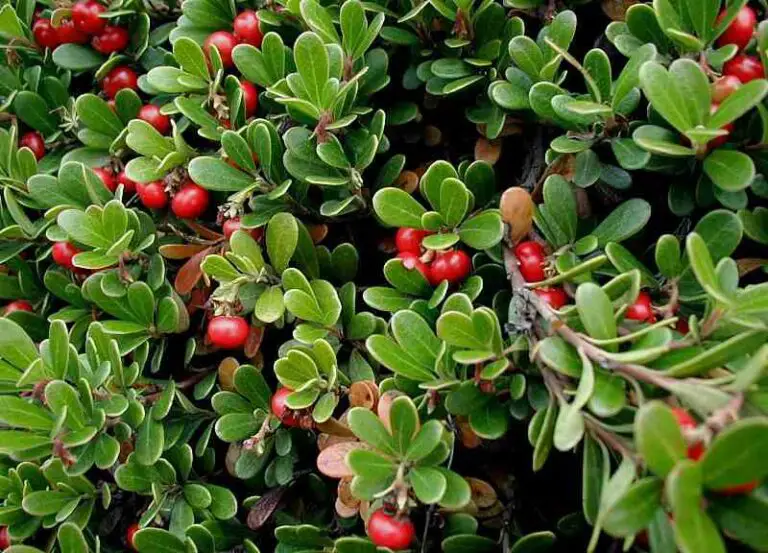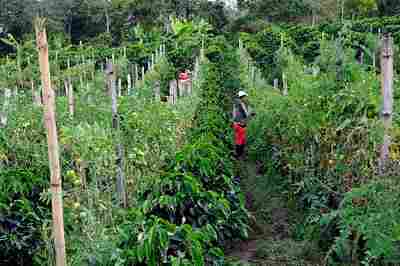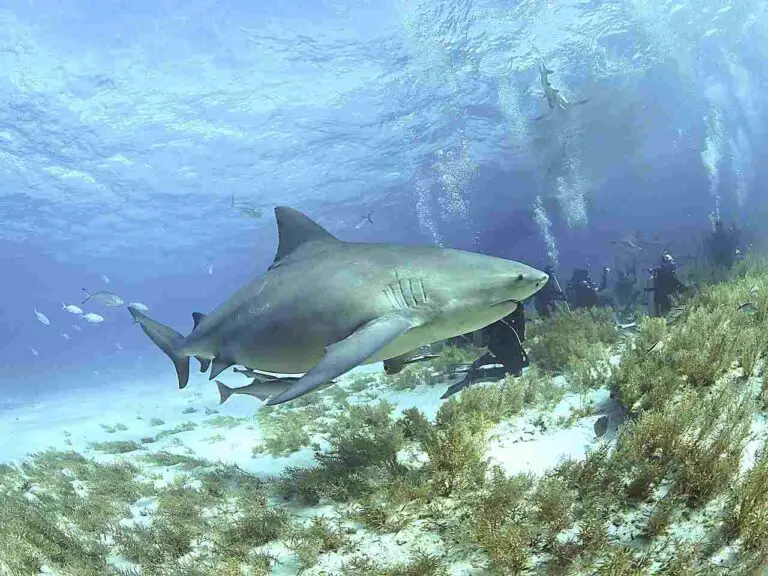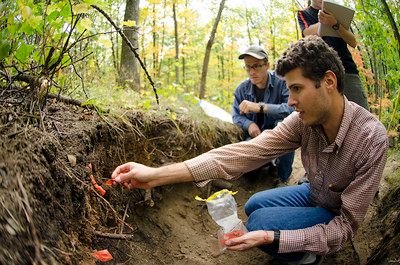7 Disadvantages of Conservation Tillage Explained
Disadvantages of conservation tillage are; loss of drainage, high labor demand, cost, chemical use, short-term benefits, soil amendment challenges, and greenhouse emissions.
This article discusses disadvantages of conservation tillage, as follows;
1). Loss of Soil Drainage (as one of the Disadvantages of Conservation Tillage)
Conservation tillage is suitable for soils with poor drainage, and can help improve the drainage properties of such soils.
However, for soils with excellent drainage characteristics, the effect of conservation tillage is not always positive.
This is especially the case where conservation tillage is not combined with other sustainable farming practices, or is not performed under the right conditions, with the right equipment, or appropriate approach.
An example of this is a scenario where conservation tillage is applied on soils that have a recent history of deforestation, and de-vegetation. Such high-drainage soils, when subjected to conservation tillage, lose a significant amount of their drainage capability.
Also, combining conservation tillage with an incompatible practice of sustainable agriculture can cause soil to lose its useful properties; including drainage.
Example of this is the combination of integrated crop-livestock farming, crop rotation, and conservation tillage. If crops at any stage of the rotation sequence (cover crops for example), are exposed to livestock as grazing fodder, trampling of the soil by these livestock can cause unhealthy compaction and reduce drainage.
2). High Labor Demand
Conservation tillage generally requires a significant amount of manual labor in its initial stages.
The main reason for this is the fact that conservation tillage involves a high degree of specialization and technicality.
In order to productively cultivate crops with minimal tillage of the soil, a specialized and careful approach is needed. Such an approach often involves hand labor, as well as some specialized equipment.
In addition to labor, conservation tillage is time-demanding. These requirements raise the stakes for practicing conservation tillage, and can be deterring to farmers.

3). High Cost (as one of the Disadvantages of Conservation Tillage)
One of the disadvantages of conservation tillage is its cost.
At the stage of implementation, there are various factors that contribute to raising the cost of conservation tillage. They include labor and time, which are both highly demanded in this system of farming.
Chemicals are also highly demanded in conservation tillage. These chemicals, which include pesticides and herbicides, form a significant part of the cost requirement [7].
Equipment may also add to the implementation (or capital) cost of conservation tillage.
However, the long-term cost of conservation tillage is relatively-low, especially when we consider the potential for high crop productivity, of this method.
4). More Chemical Use
Conservation tillage often involves the intensive use of chemicals.
These chemicals include herbicides, pesticides and fertilizers, that are applied to augment for minimal soil tillage.
Herbicides are especially used in conservation tillage farming to control weeds [6], in the absence of mechanical weeding methods.
Although the outcomes of using these chemicals are generally positive, they are capable of causing various forms of environment degradation as well.
Soils on which conservation tillage is being practiced, usually develop high pore connectivity, which encourages the leaching of water-mobile components. Agricultural chemicals are water-mobile, and can be leached and transported by water, into groundwater or streams and rivers.
Such a scenario will lead to pollution of the affected water systems.
Minimizing the risk of chemical degradation in conservation tillage, can be achieved by choosing organic methods of farming like composting and biological control, that can support crop growth.
5). Minimal Short-term Benefits (as one of the Disadvantages of Conservation Tillage)
Conservation tillage is highly beneficial.
However, short-term implementation of the method does not provide any instantaneous benefits.
Instead, in the short-term, the cost of conservation tillage is often high due to labor, time and equipment; while the agricultural productivity may be average due to the conservative approach being used.
In the long-term, conservation tillage leads to increase in essential soil nutrients like Nitrogen [3]. The organic matter of soil also increases after a long period of implementation, alongside the microbial, physicochemical and biochemical vitality of the soil ecosystem.
The long-term operating cost of conservation tillage is also relatively-low, unlike its high short-term cost.
Lack of instantaneous benefits is a disadvantage because it discourages subsistence farmers and other enterprises that require such benefits, from implementing conservation tillage. There is also the risk of losing the long-term benefits to natural hazards, climate change, drought and erosion among other factors.
6). Soil Amendment Challenges
In conservation tillage, the goal is to minimize mechanical disturbance of soil [2].
This can cause some limitations with regards to soil amendment procedures. Because of the low disturbance of soil, it is not easy to introduce fertilizer into the soil.
Organic soil amendments like biochar (from pyrolysis), compost, and other forms of biomass, are also relatively-difficult to introduce into soil that is under conservation-tillage system.
However, studies suggest that the integration of soil amendment with conservation tillage can yield positive results, if achieved. These results include improved moisture retention and fertility, and have been observed in forest-zone soils, among others [5].

7). Greenhouse Emissions (as one of the Disadvantages of Conservation Tillage)
Conservation tillage is known to reduce agricultural emissions of CO2, by increasing soil organic carbon, carbon sequestration capacity, and effectiveness of carbon capture and storage in soils [4].
However, the emission of other greenhouse gases may be increased through conservation tillage. These include nitrous oxide (N2O) and Methane (CH4).
Nitrous oxide emission is multiplied through long-term conservation tillage, as a result of various processes including moisture content increase, microbial activity and nitrification [1].
Methane emissions can be attributed to similar causes, and is proportional to the amount of organic matter that accumulates in the course of conservation tillage.
These emissions are not good for the environment because they contribute to global warming. Because the dynamics of greenhouse gas production from conservation tillage are variable, it is not easy to minimize such emissions.
Conclusion
Disadvantages of conservation tillage are;
1. Loss of Soil Drainage
2. High Labor Demand
3. High Cost
4. More Chemical Use
5. Minimal Short-term Benefits
6. Soil Amendment Challenges
7. May Contribute to Greenhouse Emissions
References
1). Abdalla, M.; Osborne, B.; Lanigan, G. J.; Forristal, P. D.; Williams, M.; Smith, P.; Jones, M. B. (2013). “Conservation tillage systems: A review of its consequences for greenhouse gas emissions.” Soil Use and Management 29(2). Available at: https://doi.org/10.1111/sum.12030. (Accessed 3 September 2022).
2). Busari, M. A.; Kukal, S. S.; Kaur, A.; Bhatt, R.; Dulazi, A. A. (2015). “Conservation tillage impacts on soil, crop and the environment.” International Soil and Water Conservation Research 16(2). Available at: https://doi.org/10.1016/j.iswcr.2015.05.002. (Accessed 3 September 2022).
3). Lafond, G. P.; Walley, F. L.; Schoenau, J.; May, W.; Holzapfel, C. B.; McKell, J. (2008). “Long-Term vs Short-Term Conservation Tillage.” Available at: https://www.researchgate.net/publication/241675540_Long-Term_vs_Short-Term_Conservation_Tillage. (Accessed 3 September 2022).
4). Lal, R.; Kimble, J. M. (1997). “Conservation tillage for carbon sequestration.” Nutrient Cycling in Agroecosystems 49(1):243-253. Available at: https://doi.org/10.1023/A:1009794514742. (Accessed 3 September 2022).
5). Mesele, S. A.; Amegashie, B. K.; Onawumi, O.; Quansah, C. (2017). “Integrating soil amendments with conservation tillage improves soil moisture storage and maize yield in the semi-deciduous forest zone of Ghana.” Agricultural Research Journal 54(1):21. Available at: https://doi.org/10.5958/2395-146X.2017.00004.7. (Accessed 3 September 2022).
6). Shrestha, A.; Wright, S.; Lanini, T.; Vargas, R.; Mitchell, J. P.; Madera, E.; Counties, C. (2006). “Conservation Tillage and Weed Management.” Available at: https://www.researchgate.net/publication/238728220_Conservation_Tillage_and_Weed_Management. (Accessed 3 September 2022).
7). Uri, N. D. (2000). “An evaluation of the economic benefits and costs of conservation tillage.” Environmental Earth Sciences 39(3):238-248. Available at: https://doi.org/10.1007/s002540050004.(Accessed 3 September 2022).



